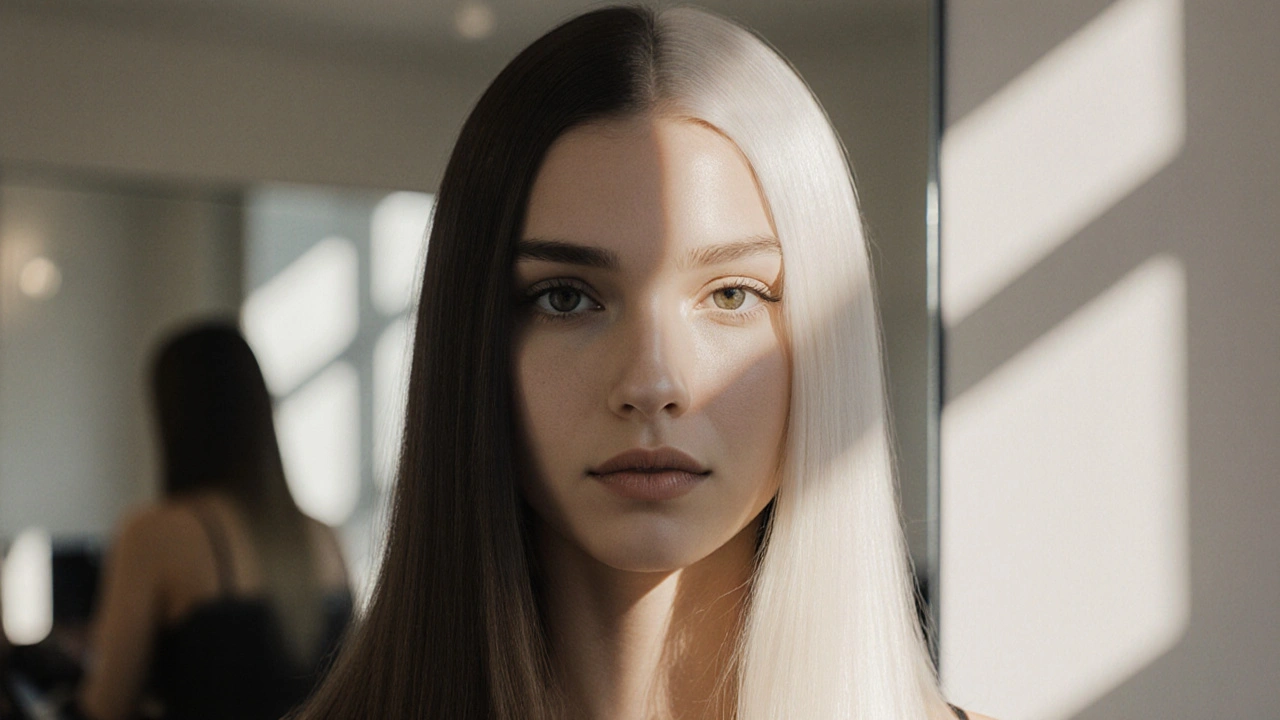When you decide to go from dyed hair back to natural, the process of allowing your original hair color to grow out after chemical coloring. Also known as growing out color, it’s one of the most common but misunderstood hair journeys many women take. It’s not just about waiting—it’s about managing the contrast, protecting your strands, and keeping your confidence high while your roots grow in.
Most people think they have to either chop it all off or live with a harsh line between color and root. But that’s not true. The real trick is blending. Whether you’ve gone platinum, red, or jet black, your hair doesn’t have to look like a bad paint job. Many of the tips you’ll find in our collection focus on how to use hair extensions, additions to natural hair used to increase length, volume, or color. Also known as hair wefts, they can help mask regrowth while you wait for your natural color to return. Clip-ins, halos, and tape-ins are all tools that let you keep your style intact without stressing your hair. And if your hair’s dry from bleach? That’s where hair extension care, the routine of washing, conditioning, and protecting artificial or added hair. Also known as extension maintenance, it’s the same care your natural hair needs after color damage. comes in. Washing less, using silk pillowcases, avoiding heat—these aren’t just for extensions. They’re lifesavers for hair going back to its original tone.
Some of you might be worried about how long it takes. If you dyed your hair dark and now want to return to light, it could take a year. But you don’t need to sit still. Our posts show real ways to manage the transition: how to choose the right shade of extensions to match your growing roots, how to use low-maintenance styles to hide regrowth, and even how to talk to your stylist about toning instead of re-dyeing. You’ll also find advice on hair damage repair, restoring strength and moisture after chemical processing. Also known as hair recovery, it’s critical when you’re letting color fade naturally instead of bleaching again.. Things like castor oil, deep conditioners, and protein treatments aren’t magic—but they’re backed by what works in salons and homes across North Carolina.
You’re not alone in this. Thousands of women every year make the switch—from bold color back to their roots. And with the right approach, you won’t just survive the transition—you’ll look better than ever. The posts below give you real, practical steps: how to pick extensions that blend, how to care for hair that’s been through too much, and how to make peace with your natural shade as it grows in. No fluff. No pressure. Just what actually works.

Dyed hair doesn't fade back to natural color-it grows out. Learn the real timeline, the best transition methods, how to avoid damage, and why professional blending works better than DIY fixes.